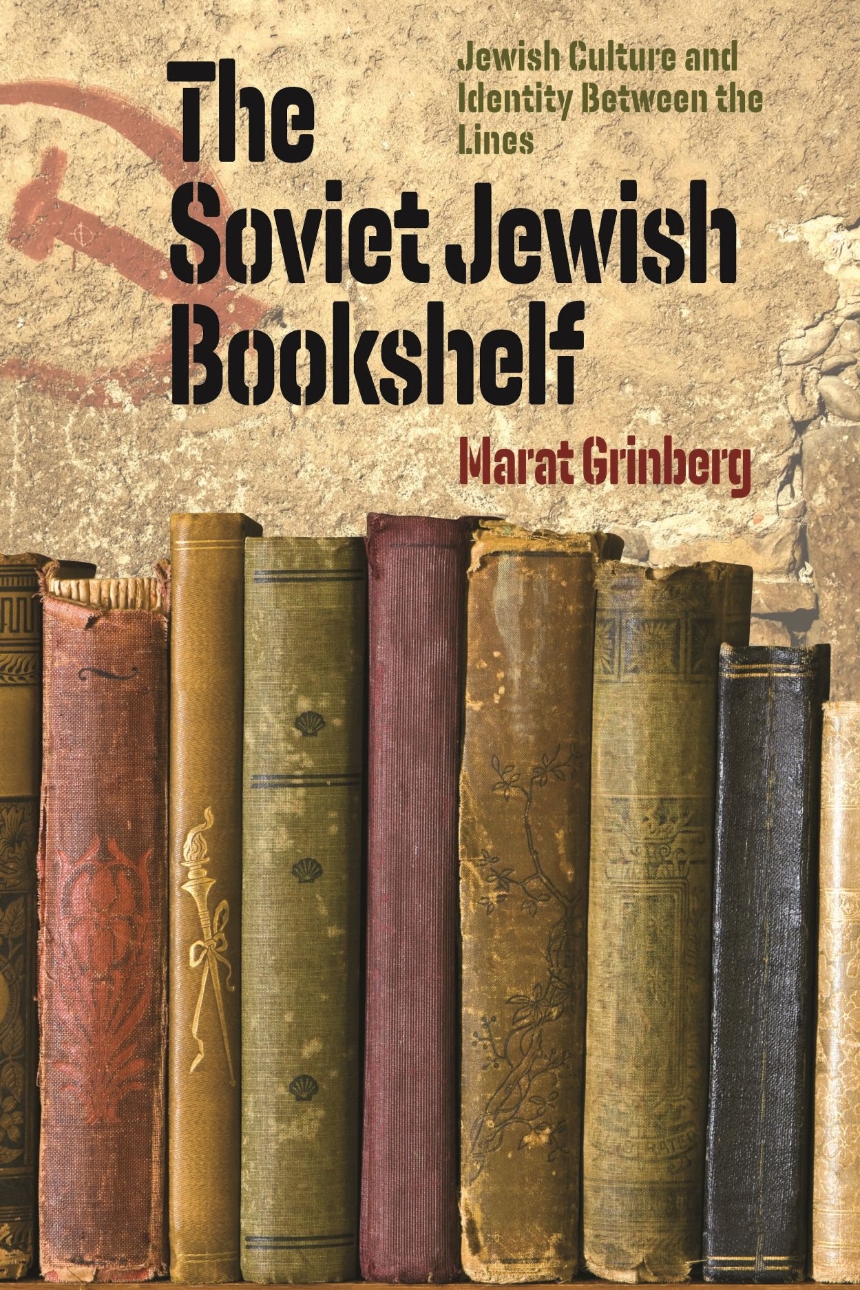9781684581313
9781684581320
Distributed for Brandeis University Press
The Soviet Jewish Bookshelf
Jewish Culture and Identity Between the Lines
An original investigation into the reading strategies and uses of books by Jews in the Soviet era.
In The Soviet Jewish Bookshelf, Marat Grinberg argues that in an environment where Judaism had been all but destroyed, and a public Jewish presence routinely delegitimized, reading uniquely provided many Soviet Jews with an entry to communal memory and identity. The bookshelf was both a depository of selective Jewish knowledge and often the only conspicuously Jewish presence in their homes. The typical Soviet Jewish bookshelf consisted of a few translated works from Hebrew and numerous translations from Yiddish and German as well as Russian books with both noticeable and subterranean Jewish content. Such volumes, officially published, and not intended solely for a Jewish audience, afforded an opportunity for Soviet Jews to indulge insubordinate feelings in a largely safe manner. Grinberg is interested in pinpointing and decoding the complex reading strategies and the specifically Jewish uses to which the books on the Soviet Jewish bookshelf were put. He reveals that not only Jews read them, but Jews read them in a specific way.
In The Soviet Jewish Bookshelf, Marat Grinberg argues that in an environment where Judaism had been all but destroyed, and a public Jewish presence routinely delegitimized, reading uniquely provided many Soviet Jews with an entry to communal memory and identity. The bookshelf was both a depository of selective Jewish knowledge and often the only conspicuously Jewish presence in their homes. The typical Soviet Jewish bookshelf consisted of a few translated works from Hebrew and numerous translations from Yiddish and German as well as Russian books with both noticeable and subterranean Jewish content. Such volumes, officially published, and not intended solely for a Jewish audience, afforded an opportunity for Soviet Jews to indulge insubordinate feelings in a largely safe manner. Grinberg is interested in pinpointing and decoding the complex reading strategies and the specifically Jewish uses to which the books on the Soviet Jewish bookshelf were put. He reveals that not only Jews read them, but Jews read them in a specific way.
284 pages | 16 halftones | 6 x 9 | © 2022
The Tauber Institute Series for the Study of European Jewry
History: European History
Literature and Literary Criticism: Slavic Languages
Reviews
Table of Contents
Introduction: The Soviet Jewish Bookshelf: There’s “there, there”
Chapter One: Lion Feuchtwanger – the Soviet Jewish Scripture
Chapter Two: The Core: Salvage Fragments
Chapter Three: “Translated from Jewish”: Read and Unread
Chapter Four: The Bottom Shelf: Between the Lines of “Reactionary” Judaism and Anti-Zionism
Chapter Five: Signs of the Times: Yuri Trifonov and the Strugatsky Brothers
Epilogue: Perestroika and Beyond
Notes
Bibliography
Chapter One: Lion Feuchtwanger – the Soviet Jewish Scripture
Chapter Two: The Core: Salvage Fragments
Chapter Three: “Translated from Jewish”: Read and Unread
Chapter Four: The Bottom Shelf: Between the Lines of “Reactionary” Judaism and Anti-Zionism
Chapter Five: Signs of the Times: Yuri Trifonov and the Strugatsky Brothers
Epilogue: Perestroika and Beyond
Notes
Bibliography

